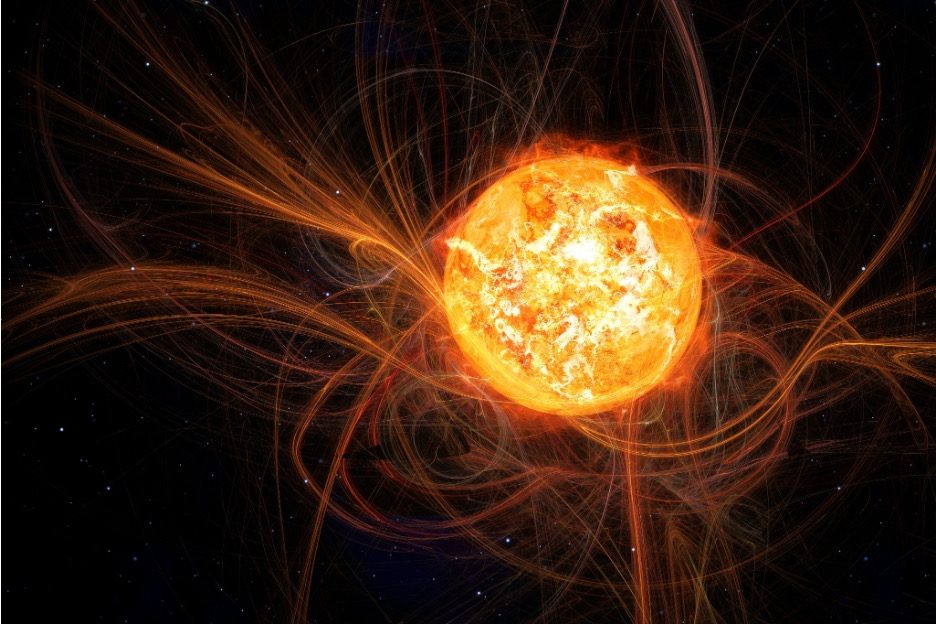How Old Is The Sun?
29th Nov 2022
The Sun is one of 200+ billion stars in our Milky Way galaxy and the largest object in our solar system. It accounts for 99.8% of the solar system’s mass. By spectral classification, the Sun is a G2V class star (small “yellow dwarf” stars). But on an Earth scale, its dimensions are simply enormous — about 1 million planets like ours could fit in it. Moreover, every part of the solar system depends on the Sun. So do we, because sunlight is the main source of life on Earth (responsible for photosynthesis and the climate). This raises a question — how old is the Sun, how long will it keep shining, when will it start to fade, and how will it affect life on Earth? Let’s find out.
How old is the Sun in Earth years?
Scientists believe Sun is about 4.6 billion years old, plus or minus a few million. A lot, right? This is temendous, considering that life on Earth (the simplest organisms) appeared about 3.5 billion years ago. The first arthropods, the ancestors of modern insects, about 600 million years ago. The Sun is believed to have formed from a cloud of dust and gas known as the solar nebula. Under the influence of gravity, it rotated faster and faster. It gradually formed into a hot gas ball of hydrogen-helium plasma with a density of 1.4 g / cm³ (1.4 times greater than that of water). It has a temperature of approximately 6 thousand degrees Celsius on the surface and almost 20 thousand inside the core.
There is a constant thermonuclear reaction taking place in the solar core. This reaction converts hydrogen into helium. That is, every second, about 700 million tons of hydrogen are converted into 696 tons of helium. The remaininf and turning 4 million tons of matter into solar radiation. Periodically, geomagnetic storms comprising solar flares and coronal mass ejections occur on the Sun. These storms can be cast off up to 20 billion tons of matter per incident. And these processes, according to scientists, will continue for at least another 5 billion years. But what happens after?
Will the Sun die?
As the Sun gradually uses up its hydrogen fuel, which at its current stage is still about 70% of the total mass, it will start to heat up and grow up to 10% brighter by about 10% in a billion years. Then, somewhere in 6 billion years, the next stages of fusion will activate, eventually turning the Sun into a red giant about 256 times larger than its current size. The red giant will swallow first Mercury and Venus and then our planet.
The evolution of the Sun will not end with a supernova explosion because its mass is insufficient for it. Approximately 12 billion years from now, when the Sun passes the red giant phase, its shell will explode, forming a planetary nebula. A white dwarf, approximately the size of the Earth, formed from the solar core, will remain at its centre. Initially, it will be ten times hotter than the Sun is now and almost as bright, but over billions of years, it will gradually cool down and fade.

How do we know how old the Sun is
You may be surprised, but meteorites helped scientists determine the Sun’s age. More specifically, they used radioactive dating of the oldest space rocks in the solar system. There is a strong possibility that the solar system (i.e. the Sun, planets, asteroids, etc.) formed as a single entity. And this means that the age of the Sun should be close to the age of meteorites. The chemical analysis of meteorites found on Earth allows us to state that their bodies have not been heated for 4-4.5 billion years. The oldest rocks on Earth are approximately the same age. This helps us answer two questions at once: what is the age of the sun, and how old is the sun compared to Earth — 4.5-4.6 billion years?
Since the average life cycle of yellow dwarfs, to which the Sun belongs, is 10 billion years, we can say that at present, it is approximately in the middle of its evolution, and at least 5 billion more years will pass before the Sun transforms into a red giant. By earthly standards, that’s an enormous amount of time. But in fact, the Earth has much less time than that.
How does the age of the Sun affect life on Earth?
The sun is the main source of energy on Earth. It affects the Earth’s atmosphere, thanks to which we can observe various natural phenomena. In other words, snow, rain and fog would never occur without solar energy. Animals and plants also exist thanks to the energy of the Sun. Without vegetation on the planet, we would not be able to breathe clean air. It is with the help of chlorophyll, located in green leaves and its interaction with the sun’s rays that the air is saturated with oxygen.
In other words, the Sun gave life to the Earth, and the Sun will one day take it away. An increase in star luminosity and temperature will evaporate the earth’s oceans in 3-4 billion years, and the temperature of the earth’s surface will become higher than on Venus (740 degrees Celsius). But the Earth will become unsuitable for human life much sooner than that, in about 200-300 million years. As the Sun age increases, it gradually heats up and expands, emitting more and more radiation. And every additional 1% of solar radiation causes an increase in global temperature on Earth by 2 degrees Celsius. This, in turn, will annihilate all living things on Earth.
Don’t forget the humans
The problem of global warming caused by the increase of greenhouse gases over the past 100 years has clearly shown us that a one-degree increase in the Earth’s temperature leads to horrible consequences. In recent decades, humanity has faced the problem of melting glaciers, a huge amount of precipitation, and abnormal heat. Experts unanimously predict the growth of anthropogenic, environmental and socio-economic disasters, all of which will be no one’s fault but our own.
Scientists have calculated that over the next 300 million years, the Sun will heat the Earth by at least another 6 degrees, which will make it completely unsuitable for human and animal life. Marine life, evolving into new species that can survive in extreme conditions, will persist for some time until the oceans completely evaporate. But, with the last drops of water, these species will disappear, too. And this is still the most benign scenario because solar activity can intensify at any moment, and then this process will accelerate. Knowing, how old is the Sun, we can say that until the age of the Sun reaches its peak, humanity still has some time to ensure its survival. And there is the only way to achieve this — evolve into a powerful high-tech race that can conquer not only the solar system but also go far beyond its borders in search of a new abode.




Thank you for your comment! It will be visible on the site after moderation.